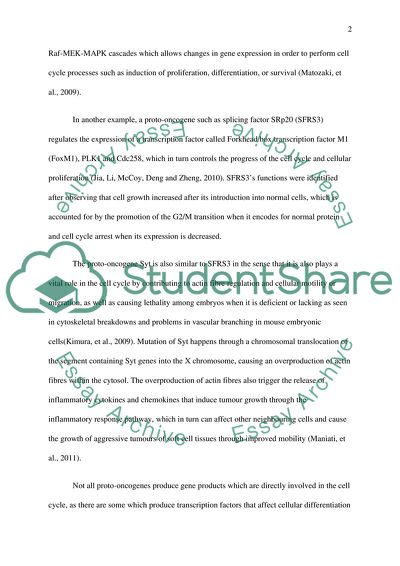Cite this document
(The Role of Oncogenes in Sustaining Proliferative Signalling, One of Coursework, n.d.)
The Role of Oncogenes in Sustaining Proliferative Signalling, One of Coursework. https://studentshare.org/health-sciences-medicine/1810560-the-role-of-oncogenes-in-sustaining-proliferaqve-signaling-one-of-the-hallmarks-of-cancer
The Role of Oncogenes in Sustaining Proliferative Signalling, One of Coursework. https://studentshare.org/health-sciences-medicine/1810560-the-role-of-oncogenes-in-sustaining-proliferaqve-signaling-one-of-the-hallmarks-of-cancer
(The Role of Oncogenes in Sustaining Proliferative Signalling, One of Coursework)
The Role of Oncogenes in Sustaining Proliferative Signalling, One of Coursework. https://studentshare.org/health-sciences-medicine/1810560-the-role-of-oncogenes-in-sustaining-proliferaqve-signaling-one-of-the-hallmarks-of-cancer.
The Role of Oncogenes in Sustaining Proliferative Signalling, One of Coursework. https://studentshare.org/health-sciences-medicine/1810560-the-role-of-oncogenes-in-sustaining-proliferaqve-signaling-one-of-the-hallmarks-of-cancer.
“The Role of Oncogenes in Sustaining Proliferative Signalling, One of Coursework”. https://studentshare.org/health-sciences-medicine/1810560-the-role-of-oncogenes-in-sustaining-proliferaqve-signaling-one-of-the-hallmarks-of-cancer.


